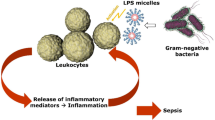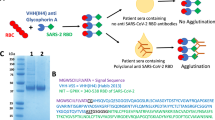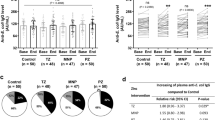Abstract
IN the last laboratory meeting of the Royal Society of Tropical Medicine, I demonstrated the various types of serial cephalin flocculation curves as obtained in health and disease with a special reference to their application in tropical derangements. In obtaining the curves, the serial dilution method was followed1, using ten tubes instead of Hanger's original one-tube method2. Serial cephalin flocculation curve I, shown in the accompanying figure, represents the normal range in fifty healthy volunteers. In a study of the mechanism of Hanger's test, which is comparable to the first tube in the serial dilution method, Kabat, Hanger et al.3 found the flocculating factor to be associated with the γ globulin. They failed, however, to find an inhibiting fraction in the albumins. Moore, Pierson et al.4 two years later, reported from the same laboratory the presence of an inhibiting fraction associated with the albumins. It is to be noted that these workers were using electrophoresis by means of which albumins appear homogeneous5. Dennis and Makari6, using salting-out methods, found the greatest concentrations of this inhibiting factor in the albumin residue. Since this inhibiting factor was found by the latter workers to be originally present in the serum in smaller amounts than the flocculating factor, the critical dilution-level of 0-04 mgm. is reached much earlier in the case of the inhibiting factor. The first zone representing the first five tubes in the figure presents, therefore, a delicate balance between flocculating factor (γ globulin) and inhibiting factor (albumin residue). In the second zone only the former is at work. This delicgite balance in this first zone represents as well a balance between the liver and reticulo-endothelial system.
This is a preview of subscription content, access via your institution
Access options
Subscribe to this journal
Receive 51 print issues and online access
$199.00 per year
only $3.90 per issue
Buy this article
- Purchase on Springer Link
- Instant access to full article PDF
Prices may be subject to local taxes which are calculated during checkout
Similar content being viewed by others
References
Makari, J. G., J. Trap. Med. and Hyg., 49, 113 (1946).
Hanger, F. M., Trans. Assoc. Amer. Phys., 53, 148 (1938).
Kabat, E. A., Hanger, F. M., Moore, D. H., and Landow, H., J. Clin. Invest., 22, 563 (1943).
Moore, D. B., Pierson, P. S., Hanger, F. M., and Moore, D. H., J. Clin Invest., 24, 292(1945).
Cohn, E. J., Oneley, J. L., Strong, L. E., Armstrong, S. H., and Hughes, W. L., Jr., J. Clin. Invest., 23, 417 (1944).
Dennis, E. W., and Makari, J. G., in the press.
Makari, J. G., J. Trop. Med. and Hyg., 49, 70 (1946).
Author information
Authors and Affiliations
Rights and permissions
About this article
Cite this article
MAKARI, J. A Non-Specific Resistance Factor in the Albumin Residue Revealed By the Serial Cephalin Flocculation Curve. Nature 160, 201–203 (1947). https://doi.org/10.1038/160201a0
Issue Date:
DOI: https://doi.org/10.1038/160201a0
This article is cited by
-
An Antibody Inhibitor
Nature (1960)
Comments
By submitting a comment you agree to abide by our Terms and Community Guidelines. If you find something abusive or that does not comply with our terms or guidelines please flag it as inappropriate.



